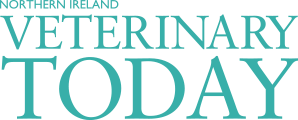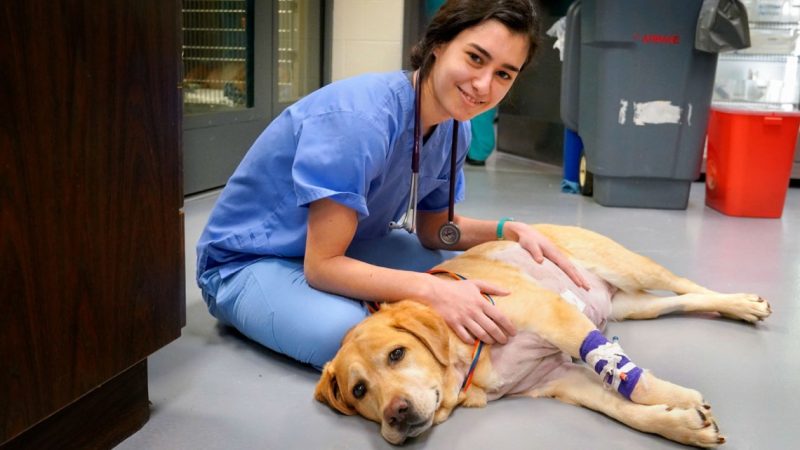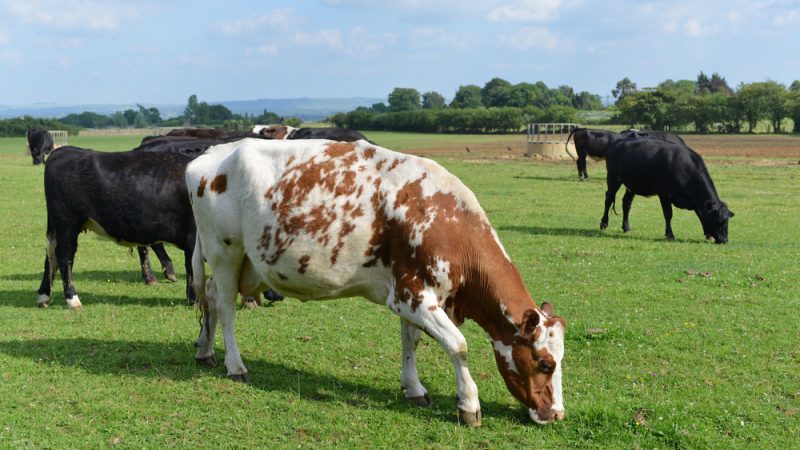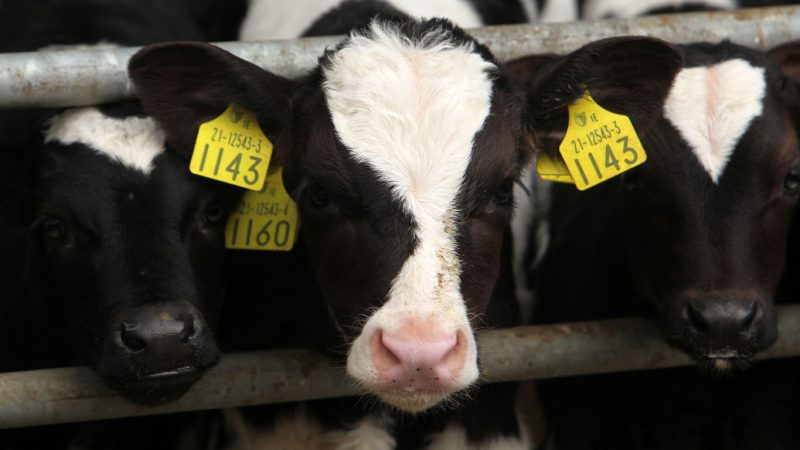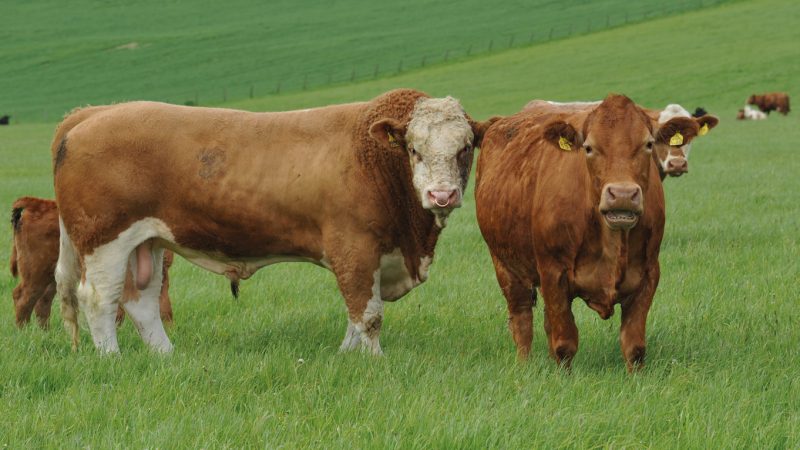The Importance of Mineral Vitamin Supplementation
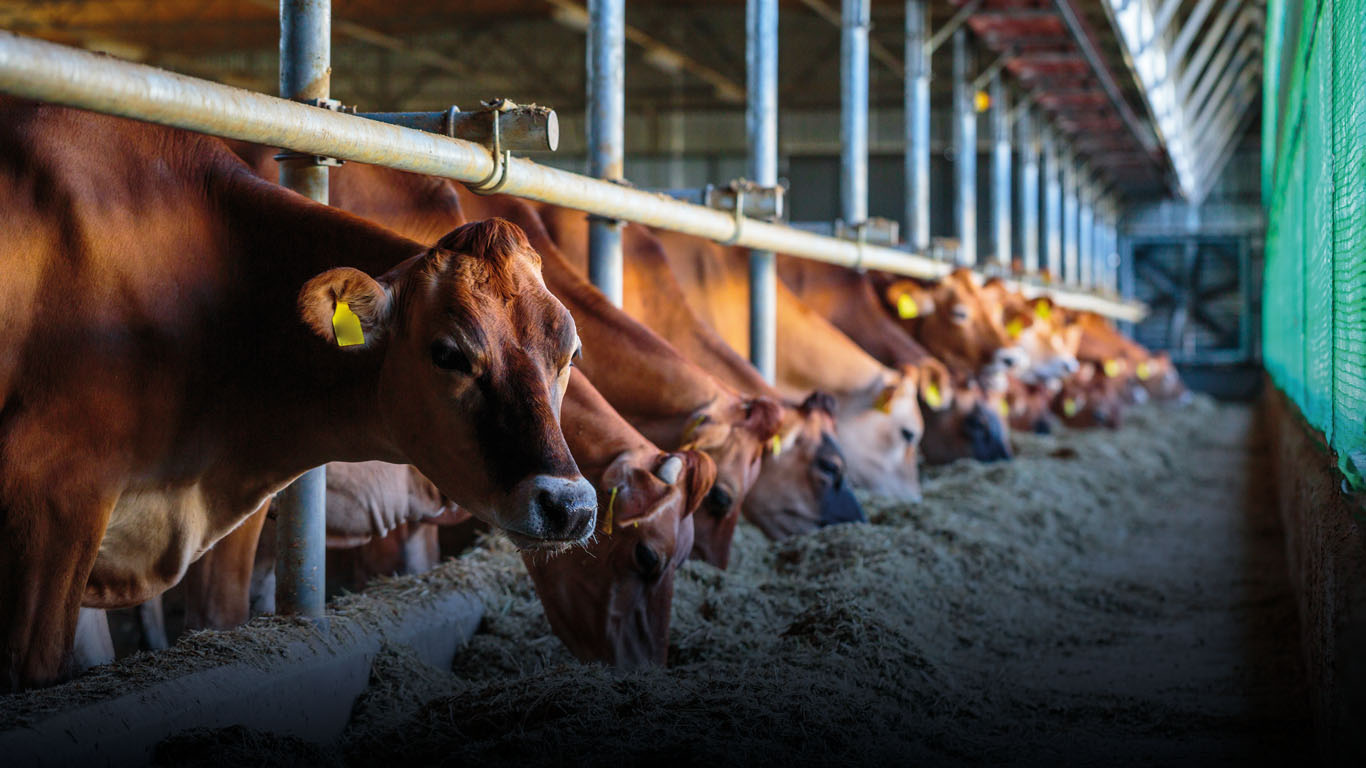
Although, minerals and vitamins account for a small percentage of dietary requirements, they do play a very important role in proper animal function, including bone development, muscle contractions, and nervous system and immune functions. Growth and fertility can be compromised if a good mineral balance isn’t maintained, writes Michael O’Rourke.

Macrominerals and microminerals
Livestock require at least 17 different minerals in their diet which are classified as either macrominerals (major minerals) or microminerals (trace minerals), based on the quantities required. Macromineral requirements are typically expressed as a percentage (%) of the total diet, while micromineral (trace element) requirements are generally expressed as milligrams per kilogram (mg/kg), which is the equivalent to parts per million (ppm).
The macrominerals required include calcium, magnesium, phosphorus, potassium, sodium, chlorine, and sulfur while the microminerals include selenium, iodine, cobalt, copper, iron, manganese, molybdenum, chromium, nickel, and zinc. Specific requirements vary, depending on animal age, weight, stage of production, lactation status, breed, stress and so on.
Mineral Interactions
There is an almost infinite number of mineral interactions which can result in mineral elements either tying up or making other mineral elements unavailable for essential bodily functions. Probably the best-known example is calcium and phosphorus which affect the required levels of each other in the diet.
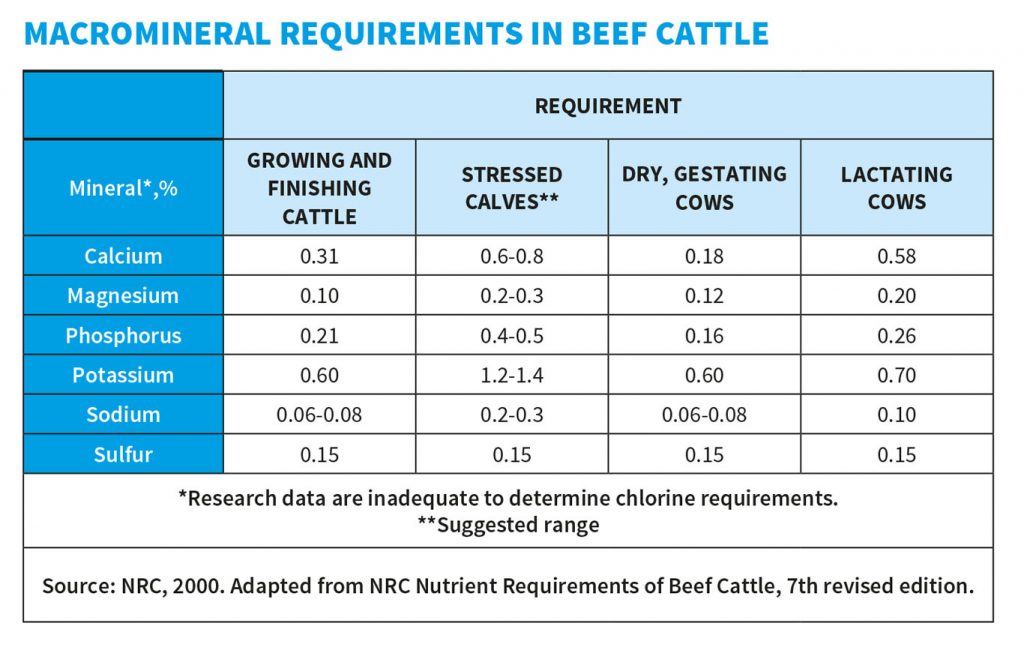
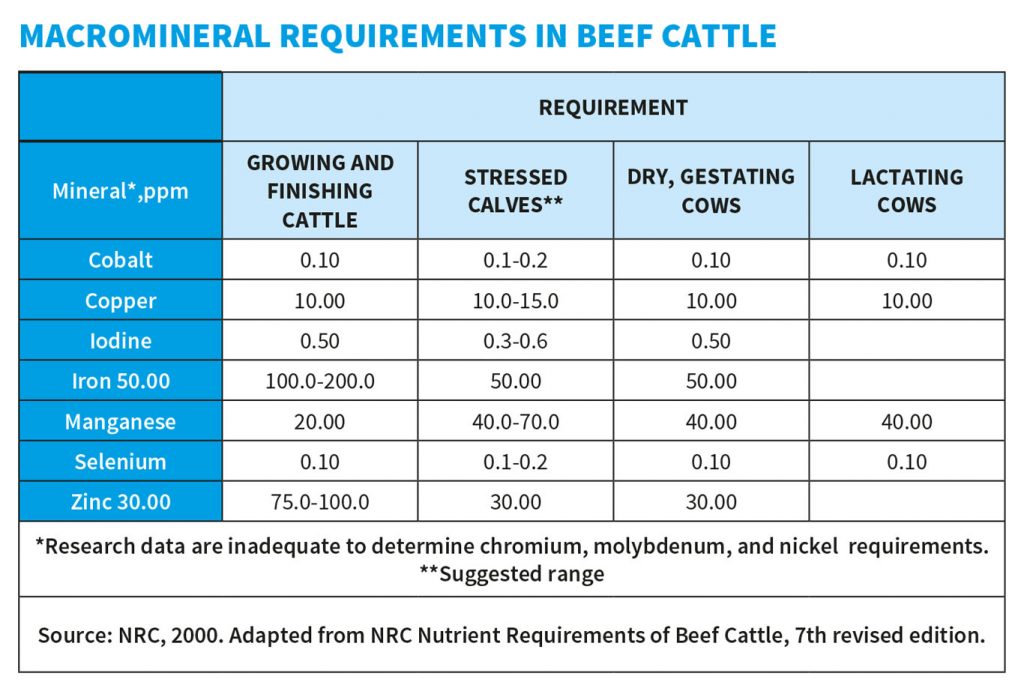
Macrominerals
Calcium (Ca)
Calcium is the most abundant mineral in the animal and is involved in bone formation and maintenance, development and maintenance of teeth, blood clotting, membrane permeability, muscle contraction, nerve impulse transmission, heart regulation, milk secretion, hormone secretion, and enzyme activation and function. Vitamin D is required for calcium absorption. Calcium deficiency interferes with normal bone growth in young animals and can cause rickets and retarded growth and development. In adult cattle, calcium deficiency can cause osteomalacia (weak and brittle bones). Milk fever occurs as a result of calcium deficiency and requires instant supplementation. As referred to above, the balance of minerals in the diet can be more important than quantity. Calcium recommendations are expressed in terms of a calcium to phosphorus ratio (Ca:P), where 6:1 approx is ideal, with a range of 1:1 to 4:1 being acceptable.
Phosphorus (P)
Phosphorus is required for skeletal development and maintenance, normal milk secretion, muscle tissue building, cell growth and differentiation, energy use and transfer, efficient food use, membrane formation and function of many enzyme systems. Phosphorus requirements are referred to by way of a calcium to phosphorus ratio. The most critical aspect is that phosphorus levels meet requirements. Too much phosphorus in the diet can also result in urinary calculi. Phosphorus deficiency reduces growth and feed efficiency, decreases dry matter intake, lowers reproductive performance, depresses milk production, and causes weak and fragile bones. Recommended phosphorus levels in a mineral supplement are generally from four to eight per cent, largely depending on forage conditions and other levels of dietary sources of phosphorus.
Magnesium (Mg)
Magnesium is important for enzyme activation, glucose breakdown, genetic code transmission, membrane transport, nerve impulse transmission, and skeletal development. Generally, magnesium toxicity is not a problem but deficiency however, can cause excitability, anorexia, increased blood flow, convulsions, frothing at the mouth, prolific salivation, and soft tissue calcification. Young animals can mobilise large amounts of magnesium from bone, but adult animals can’t do this so require regular and adequate magnesium supplies in the diet. Grass tetany, a condition common among lactating cows grazing lush forages, is characterised by low magnesium levels.
Potassium (K)
The third most abundant mineral in the body, Potassium is involved in acid-base balance, osmotic pressure regulation, water balance, muscle contractions, nerve impulse transmission, oxygen and carbon dioxide transport in the blood, and enzyme reactions. Potassium prevents tetany. Potassium deficiency is indicated by reduced feed intake, lowered weight gains, rough hair coat, and muscle weakness. Body stores of potassium are low, but forages are good sources. Potassium content can be very high in lush pasture, potentially contributing to grass tetany onset.
Sodium (Na) and Chlorine (Cl)
Sodium and chlorine are components of common white salt and are important for maintaining osmotic pressure, controlling water balance and acid-base balance and carrying glucose and amino acids. Animals crave salt and will consume more than needed when supplied.
Sulfur (S)
Sulfur is a building block in several amino acids and B vitamins along with other organic compounds. Sulfur functions in the body in detoxification reactions and is required by ruminal microorganisms for growth and normal cell function. Sulfur toxicity is characterised by restlessness, diarrhoea, muscle twitching, and laboured breathing while low levels can reduce feed intake, depress growth, decrease copper levels and result in weight loss, weakness, salivation, and death. Sulfur in feedstuffs is found largely as a component of protein.
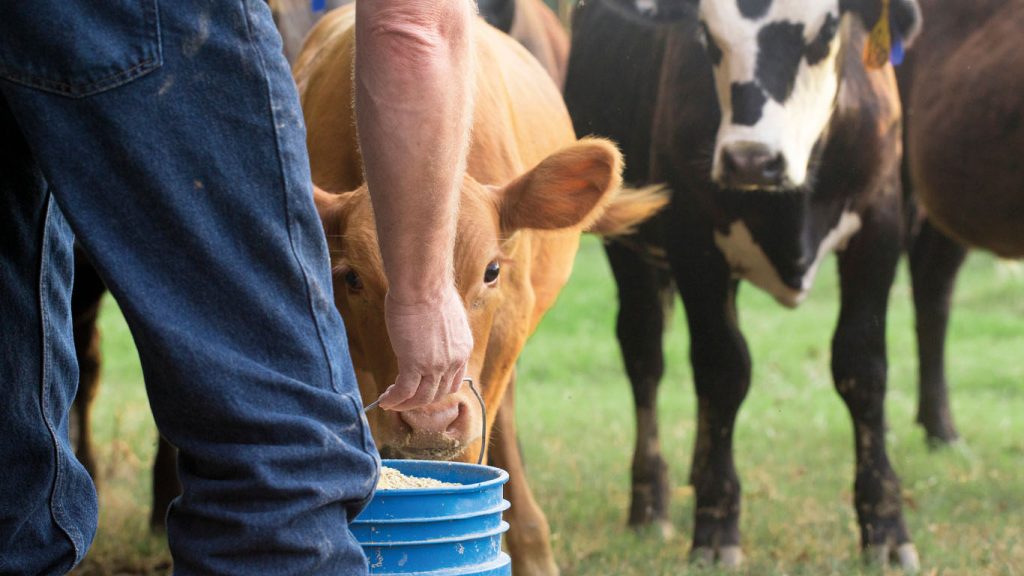
Microminerals
Selenium (Se)
Selenium plays an important part in enzyme function and in thyroid hormone metabolism. The functions of vitamin E and selenium are inter-related. Diets low in vitamin E may require selenium supplementation. Selenium toxicity causes lameness, anorexia, sore feet, cracked and deformed hooves, liver cirrhosis, kidney inflammation, and tail hair loss while deficiency can lead to white muscle disease. Calves may experience compromised immune response even when no other clinical signs are present. Unthriftiness, weight loss, and diarrhoea are other signs of deficiency.
Cobalt (Co)
Cobalt functions as a component of vitamin B12 (cobalamin). Ruminants can synthesise vitamin B12 if cobalt is present. Cattle can tolerate approximately 100 times their dietary requirement so cobalt toxicity is very unlikely. Young, growing animals are more sensitive to cobalt deficiency. Cobalt deficiency signs are depressed appetite and reduced growth performance or weight loss. As cobalt is not stored, regular supplementation is required particularly if soil levels are low and manganese level are high. Cobalt supplementation is especially important in young lambs.
Copper (Cu)
Copper is an essential component of enzyme function. Supplementing with too much copper or contaminating feeds with copper could result in copper toxicity, especially in sheep. The liver can store copper but molybdenum, sulfur, and iron levels in the diet affect copper levels required to induce toxicity. Copper deficiency can be a problem resulting in anemia, reduced growth, loss of hair pigmentation and changes in hair growth and appearance.
Iodine (I)
Iodine is a key component of thyroid hormones involved in energy metabolism. Iodine deficiency is characterised by enlargement of the thyroid (goiter). Goitrogenic substances in feeds suppress thyroid function and can affect iodine requirements. Iodine toxicity reduces weight gain, lowering feed intake, and causing coughing and undue nasal discharge.
Iron (Fe)
Iron is a critical component of hemoglobin and myoglobin, two proteins involved in oxygen transport and use. More than half of the iron in the body is in hemoglobin. In addition, some enzymes either contain or are activated by iron. Iron toxicity can cause diarrhoea, acidosis, hypothermia, reduced weight gain, and reduced feed intake. Iron depletes copper and can contribute to copper deficiency. Iron deficiency causes anemia, lethargy, lowered feed intake, reduced weight gain and pale mucous membranes. Severe parasite infestations which cause blood loss can lead to iron deficiency. Iron requirements are higher in younger animals.
Manganese (Mn)
Manganese is important for normal skeletal development, growth, and reproductive function. At extremely high levels of manganese intake, growth performance and feed intake are reduced while manganese deficiencies cause skeletal abnormalities, irregular estrus, low conception rate, abortion, stillbirths and reduced birth weights.
Molybdenum (Mo)
There is very little reported molybdenum deficiency, so molybdenum supplementation is not a practical concern. Molybdenum toxicity results in diarrhoea, anorexia, weight loss, stiffness, hair color distortion, reduced weight and lower conception rates. Copper and sulfur work against molybdenum in the body. Molybdenum contributes to copper deficiency and copper can reduce molybdenum toxicity.
Zinc (Zn)
Zinc plays an important role in immune system development as well as being a crucial component of many important enzymes which function in nucleic acid, protein, and carbohydrate metabolism. Toxicity is not of concern but zinc deficiency can cause listlessness, excessive salivation, swollen feet, scaly lesions on feet, tissue lesions, hair loss and slow healing.
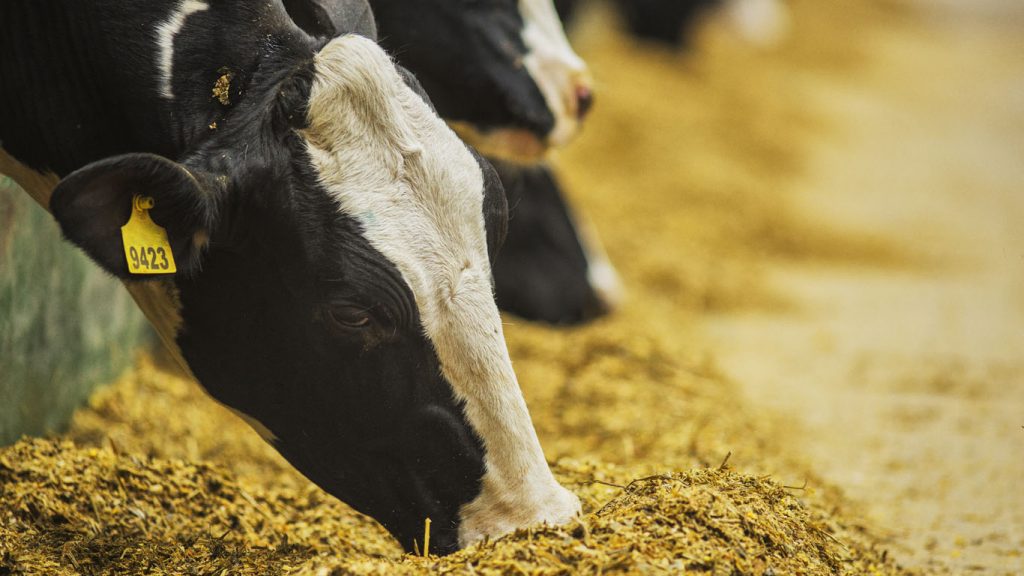
Nutritional Disorders Related to Mineral Imbalances
Mineral imbalances (toxicities or deficiencies) can trigger nutritional disorders in animals. Typical examples include grass tetany, urinary calculi, white muscle disease, polio encephalomalacia and milk fever in cattle. While these disorders can produce dramatic signs, mineral imbalances are quite often unnoticed or overlooked because only subclinical signs are present.
Vitamins
Vitamins are classified as either water soluble or fat soluble. The water soluble vitamins include the B complex and vitamin C. Fat soluble vitamins include A, D, E, and K. Rumen bacteria can produce the B complex vitamins and vitamin K. Vitamin supplementation is generally not as critical as mineral supplementation. Vitamins A and E are the vitamins which should receive the most attention and are the ones most likely to be deficient.
Vitamin A (retinol) is the vitamin most likely to be deficient. It is essential for normal vision, growth, reproduction, skin tissue and body cavity lining cell maintenance, and bone development and deficiency can show up as reduced feed intake, rough hair coat, night blindness, fluid in joints, slow growth, low conception rates, abortion and stillbirths. While it is not present in plant material, its precursors (alpha carotene, beta carotene, gamma carotene, and cryptoxanthin) are and these are converted to vitamin A in the animal. Vitamin A and beta carotene play a role in disease protection and immune system function. Vitamin A deficiency is more likely in animals fed high concentrate diets. Calves which don’t receive adequate colostrum or are stressed are at the highest risk of vitamin A deficiency.
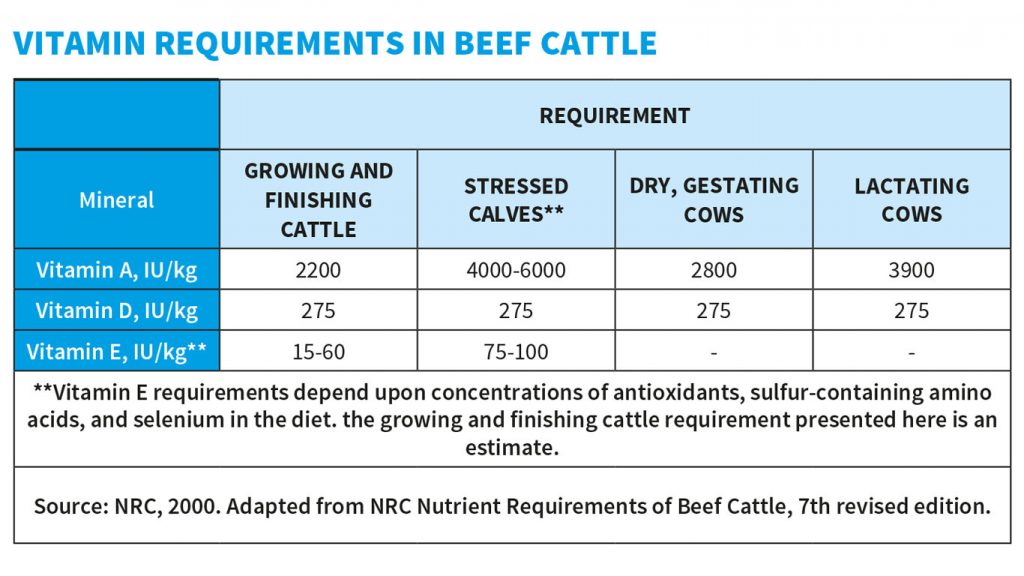
Vitamin D forms include ergocalciferol (vitamin D2) found in plants and cholecalciferol (vitamin D3) found in animals. Vitamin D is necessary for calcium and phosphorus absorption, normal bone mineralisation and calcium mobilisation from bone. Toxicity signs include calcification of soft tissues, bone demineralisation, decreased appetite, and weight loss while deficiency causes rickets where bones do not use calcium and phosphorus normally. Animals do not store vitamin D but supplementation is not absolutely necessary as it is made when the animals are exposed to sunlight.
Vitamin E (alpha-tocophorol) serves as an antioxidant in the body and is important in membrane formation, muscle structure, muscle function and plays a role in disease resistance. Selenium is closely linked with vitamin E and animals with white muscle disease often respond to either vitamin E or selenium supplementation.
In summary, appropriate intake of minerals and vitamins is essential for productivity and health. In selecting a mineral and vitamin supplement, consider the class of animal, age, weight, breeding status, forage conditions, mineral and vitamin levels in feedstuff and water sources. Investing in a good mineral and vitamin nutrition programme and properly managing mineral and vitamin feeding is highly recommended.
Mark O’Rourke has more than 20 years’ experience in the animal health sector, having held the position of sales manager with Univet Ltd / Tulivin Laboratories for most of that time. Mark has written many editorial pieces and articles for the company. Mark previously worked on research programmes on heat synchronisation in suckler cows in Teagasc Athenry.
